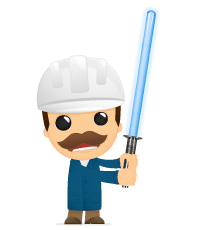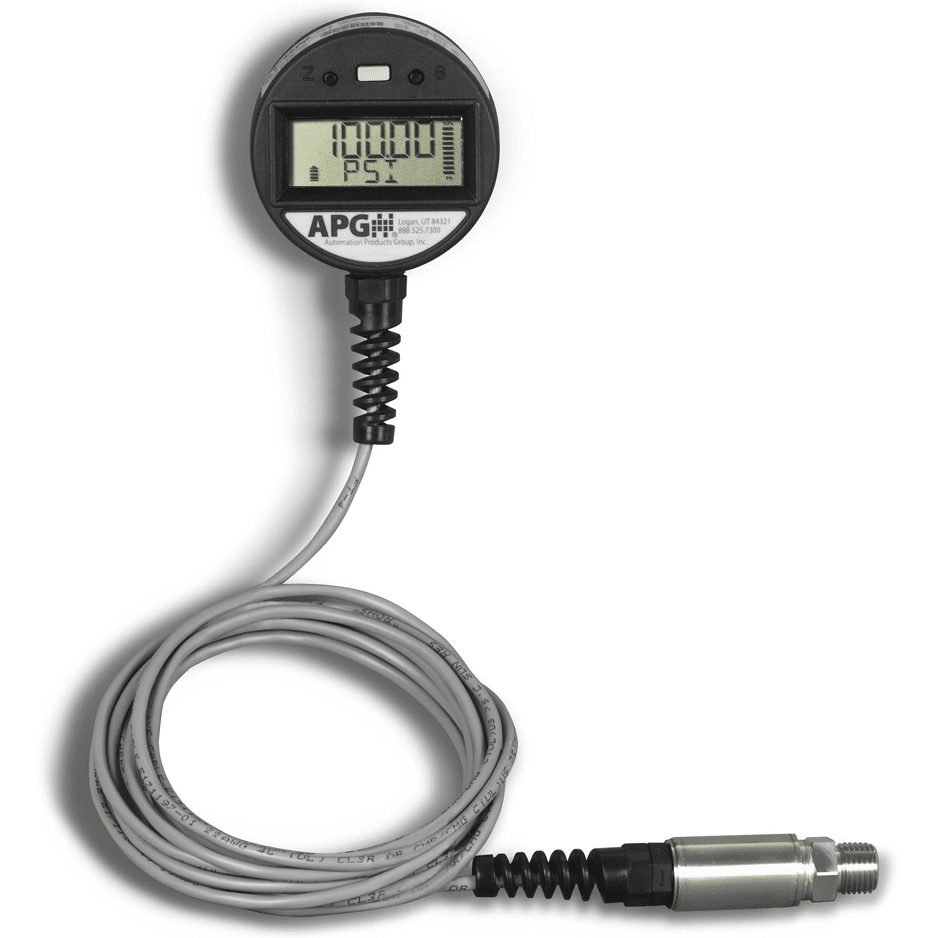 Pressure transducers are put into odd places that are often hard to reach. So when you simply want a pressure measurement on a display, the best approach is to connect directly to a digital display. Rather than buying a separate display and messing around with wiring, you can purchase your pressure transducers and displays together – literally.
Pressure transducers are put into odd places that are often hard to reach. So when you simply want a pressure measurement on a display, the best approach is to connect directly to a digital display. Rather than buying a separate display and messing around with wiring, you can purchase your pressure transducers and displays together – literally.
When pressure transmitters are tethered directly to a display, the connection is handled in the factory. You can choose between a hard-wired solution and a connector. This still gives you the flexibility to choose the length and routing of your cable, but speeds up installation.
One of the main benefits to a tethered pressure transducer and display is the cost. We can’t speak for everyone, but our customers will pay more for their display if they get it elsewhere. It’s not the biggest innovation in the world, but you might find it makes the whole project less costly and less complicated.
Utility is another benefit to displays tethered to pressure transducers. In this configuration, it really becomes much like a tool that can be carried from one pressure measurement to the next. We like to think of it like Indiana Jones’ whip (or, if we're bold, Luke Skywalker's lightsaber - if you use it a lot).
So now that you have a solid understanding of why you might tether your pressure transducers to a display, let’s discuss how you can get the best result.
One of the first things to consider is the length of cable between your sensor and display. This will immediately have an impact on what type of pressure transducer you should use.
If your cable run is short, then you can take advantage of the cost savings that come from using a millivolt output transducer. While they are less expensive than amplified output sensors, millivolt transducers have weaker signals. This results in a cable length limitation. For example, our PG7 uses a millivolt transducer when it is built in the tethered display configuration. The longest cable run we will build on these is 30 ft.
For cable runs over 30 ft. you will want to use a transducer that has an amplified signal, such as our PT-400 or PT-500 (depending on the application). With the added strength you can run cable over a 1,000 ft. and still get a good signal!

Electrical noise can be generated by a variety of equipment. Some common offenders in our industry include power supplies and electrical motors.
There are several ways to reduce the effects of electrical noise:
Make sure that the wires being used between the transducer and display are properly shielded. Shielded cable has a conductive metal wrapping just inside the cable jacket, wrapped around the wires inside. This metal will intercept electrical noise and, if properly grounded, will drain the noise straight to ground before it affects the signal wires.
Selecting a cable that has a twisted pair will reduce the effects of the electrical noise as well. By twisting the wires tightly together you reduce the loop size, or space for magnetic fields to run through and create a current between the wires.
Finally, if you are concerned about electrical noise interfering with your pressure transducer’s signal then you will want to opt for a stronger signal. This is similar to our discussion above on cable run lengths.
Again, millivolt output transducers typically cost less, but since they have the weaker signal they will be lost in the noise if they are placed in a “noisy” environment.
Using a pressure transducer with an amplified output or serial communication will improve your signal to your digital display in noisy environments since your signal is stronger.
Finally, when installing your sensors, make sure that you keep a proper distance between the cables and high voltage equipment such as power supplies, electric motors. Certain wireless frequencies can also create noise, such as RF signals.
Using pressure transducers tethered to digital displays is a good way to create either cost savings, or a portable tool. We want to make sure you get the best results possible. Follow the guidelines in this article and you’ll be on your way. And don’t hesitate to contact our application engineers for some additional guidance.
Of course, if you have any questions on tethering pressure transducers to digital displays please feel free to contact us.